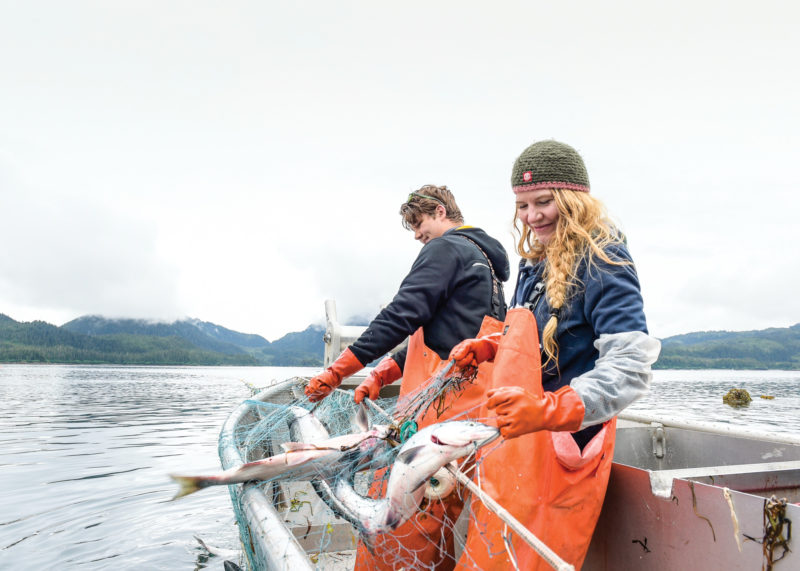The concept of traceability — knowing where your food comes from — seems simple enough. For fishermen, it’s a way of life. Yet for seafood lovers, a complex and often opaque supply chain limits their ability to know how, when, where, and by whom fish was harvested.
On the other side of the net, fishermen take great pride in feeding their families and communities, sharing the bounty of the harvest with great care, reverence and respect, as they have for centuries. The scale of today’s commercial fisheries too often obscures this connection, as fishermen pass along their catch to the tenders, then processors, and seafood enters the vast labyrinth of the global supply chain.
Yet, there is a growing movement to get back to our roots where seafood is concerned — to keep it local, or at least keep the origin story intact so that as we sit down to dinner, we can tell our kids the name of the fisherman who harvested tonight’s catch and know that the sustenance with which we’re nourishing our bodies is also what sustains that fishing family.
Catch 49, a program of the nonprofit Alaska Marine Conservation Council, is one of a growing number of community-supported fisheries across North America. The people behind these programs are working to bring back the personal connection between fisherman and consumer by serving as a dock-to-doorstep seafood provider. Catch 49 procures seafood directly from small boat fishermen in Alaska, processes it locally, and delivers it to the dinner tables of thousands of Alaskans from Homer to Fairbanks.
We tell the Story of Your Catch with every purchase, so the consumer knows who harvested their seafood, when and where. When possible, we include a few fun facts about the fishing family they are supporting with their seafood purchase. Curious customers can ask about gear type, the location of the harvest, why you bleed and ice fish immediately, the weather this season, and any number of questions that deepen their connection to their food, their harvester, and ultimately, their own respect and reverence for the resource.
This type of deep connection to our food is rare in our global economy. And while the fun facts about fishing are enlightening to customers, the benefits to fishermen are also great. Catch 49 fishermen know that their hard-won catch is feeding a person who understands what it takes to bring that beautiful fish to the table, and who appreciates their harvester and the care given to maintaining a healthy resource. What’s more, Catch 49 pays fishermen a little extra for their catch that reflects not only their hard work but also their willingness to go the extra mile from deck to dock in ensuring that the highest care and handling standards are upheld.
Catch 49 is unique among direct marketers and community supported fisheries, as it is a program of the nonprofit Alaska Marine Conservation Council. This means Catch 49 invests all proceeds in maintaining healthy fisheries and securing access for entry-level and small-boat fishermen. The council empowers small-boat fishermen to advocate for themselves in fish policy at the North Pacific Fishery Management Council and through the Board of Fisheries in Alaska.
Most notably, in 2012 the Alaska Marine Conservation Council’s advocacy helped secure a set-aside of the total allowable catch for the low-impact jig fleet in the Pacific cod and rockfish fishery in the Gulf of Alaska. That set-aside allows small-boat and entry-level fishermen a much-needed opportunity to diversify their fishing portfolio and earn capital to buy into other fisheries.
As globalization marches forward, Catch 49 is bringing back the personal relationships between harvester and consumer that make fishing so special, and we are educating consumers about all that it takes to bring a beautiful piece of fish to their dinner table.
And we’re not alone! LocalCatch.org is a network of community supported fisheries and small-scale harvesters from across North America that are committed to providing local, healthful, low-impact seafood via community supported fisheries and direct marketing arrangements in order to support healthy fisheries and the communities that depend on them. Together, we can grow the number of seafood consumers who value high quality, low-impact seafood, and thus maintain our healthy fisheries and coastal communities for generations to come.
Katy Rexford is director of Catch 49, an Alaska Marine Conservation Council program.







